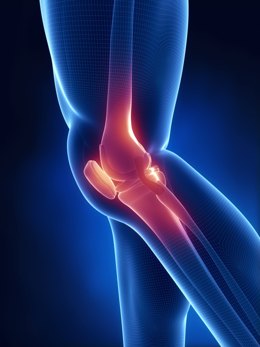Knee pain is increasingly becoming a very common ailment in today's fast-paced and demanding living conditions. This article gives you information specific to side knee pain, how it is caused, and its treatment options.

The knees support our entire body weight, and due to their complex structure and mechanism of working, they are prone to a number of ailments and injuries. Pain or swelling in the knees can cause great discomfort, and can totally disrupt one's day-to-day activities. Side knee pain can result from a variety of reasons, depending upon the individual's age, lifestyle and activity factors.
Let's take a look at some of the most common conditions that result into pain and discomfort in the side of the knee.
Lateral Meniscus Tear
This is an injury of the cartilage tissue at the lateral side of the joint, which is due to a traumatic injury or gradual wear and tear.
Symptoms:
- Pain in the knee joint
- Swelling in the knee
- Difficulty straightening the knee
Treatment:
Can usually be treated with light physical exercises, anti-inflammatory medications, and in some cases, cortisone injections. Severe conditions may require a surgery in order to mend the meniscus tear.
Lateral Collateral Ligament (LCL) Tear
This is an injury to the ligament on the outer side of the knee, due to injury or pressure to the ligament.
Symptoms:
- Outer knee pain, swelling in the outer region of the knee
- Bruising and instability
- Locking or catching of the knee with movement
Treatment:
If the condition is not severe, then some rest, application of ice, physiotherapy, and anti-inflammatory medications would help. Surgery is mostly not needed when only the LCL has been damaged.
Osteoarthritis
Knee osteoarthritis involves gradual wear and tear of the joint cartilage.
Symptoms:
- Severe right or left side knee pain, along with stiffness and swelling in the adjoining areas
- Difficulty in bending or straightening the knee
- Decrease in the range of motion of the knee
Treatment:
Depending on the severity of the condition, the treatment may involve anti-inflammatory medications or administering knee injections to provide pain relief. In case of advanced knee osteoarthritis, a joint replacement surgery may be advised.
Iliotibial Band Syndrome (ITBS)
Here, there is irritation of the thick band of fibers on the lateral side of the knee, due to vigorous physical activities like running and weightlifting.
Symptom:
- Knee pain while walking or running due to inflammation on the lateral part of the knee joint
Treatment:
Mild conditions can be taken care of by rest, application of ice, physical therapy, and by using anti-inflammatory medications. In case of a severe condition, administering a corticosteroid injection into the affected area may be considered by the health care provider.
Others
Other causes which would need a proper diagnosis and related treatment are:
- Osteochondritis dissecans (cartilage loosens from the bones due to reduced blood flow)
- Knee bursitis (inflammation of the bursae, fluid sacs that cushion the knee joint)
- ACL injury (tearing of the anterior cruciate ligament)
- Patellar tendinitis (inflammation of nearby tendons)
- Rheumatoid arthritis (arthritis that affects any joint in the body)
- Gout (type of arthritis)
- Pseudogout (calcium pyrophosphate crystals developing in the fluid of the joints)
As the famous saying goes,
prevention is better than cure, the best approach is to work towards better health and fitness, and keep your knees strong and healthy. A balanced diet along with proper weight management can keep your knees fit and strong. Make sure to wear well-cushioned shoes during workout sessions. In case of an injury, make it a point to go in for proper and timely treatment, and give enough time for rest before you put on your running shoes again.
A health conscious lifestyle, and a regular and mild exercise regime can go a long way in keeping your knees in perfect condition, and keep you on the move!
Disclaimer:
This article is for informative purposes only, and does not in any way attempt to replace the advice offered by a medical professional.


 The knees support our entire body weight, and due to their complex structure and mechanism of working, they are prone to a number of ailments and injuries. Pain or swelling in the knees can cause great discomfort, and can totally disrupt one's day-to-day activities. Side knee pain can result from a variety of reasons, depending upon the individual's age, lifestyle and activity factors.
The knees support our entire body weight, and due to their complex structure and mechanism of working, they are prone to a number of ailments and injuries. Pain or swelling in the knees can cause great discomfort, and can totally disrupt one's day-to-day activities. Side knee pain can result from a variety of reasons, depending upon the individual's age, lifestyle and activity factors.